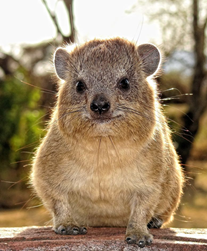High time to catch up with this and that...
| M/Wa - sg | M/Wa - pl | NN - sg | N/N - pl | |
|---|---|---|---|---|
| this - these | huyu | hawa | hii | hizi |
| that - those | yule | wale | ile | zile |
Still not sure how to build these? Let's add some colours...
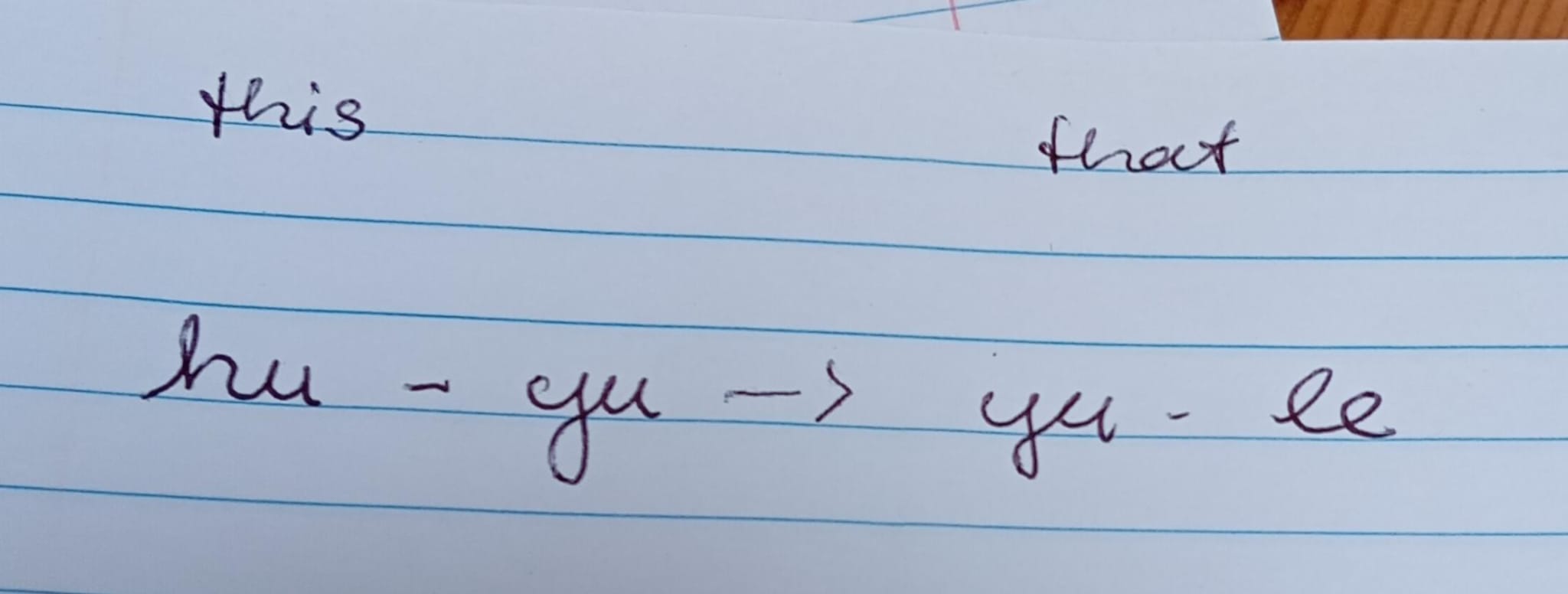
We have learned those two singular forms in the M/Wa class.They share a common syllable: yu. We could say that this 'yu' is the M/Wa singular part, while 'hu' stands for 'this' and 'le' stands for that.
As I had mentionned before - but this is a rule completely made up by me :D - hu / this is close by so it stands before the Noun class part (here: yu); le / that is far off, so it stands after the Noun class part (here: yu)
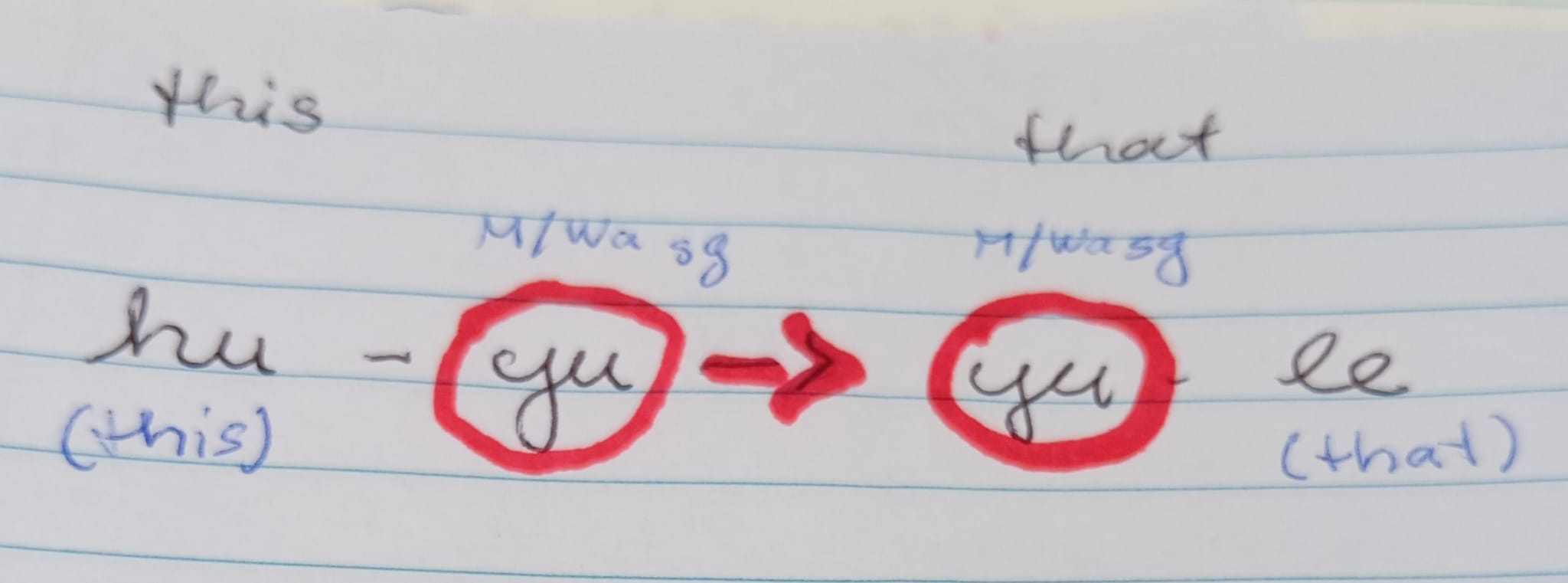
Now let's make the plural. What changes is the Noun Class part: M/Wa singular (yu-) turns into M/Wa plural (wa-)
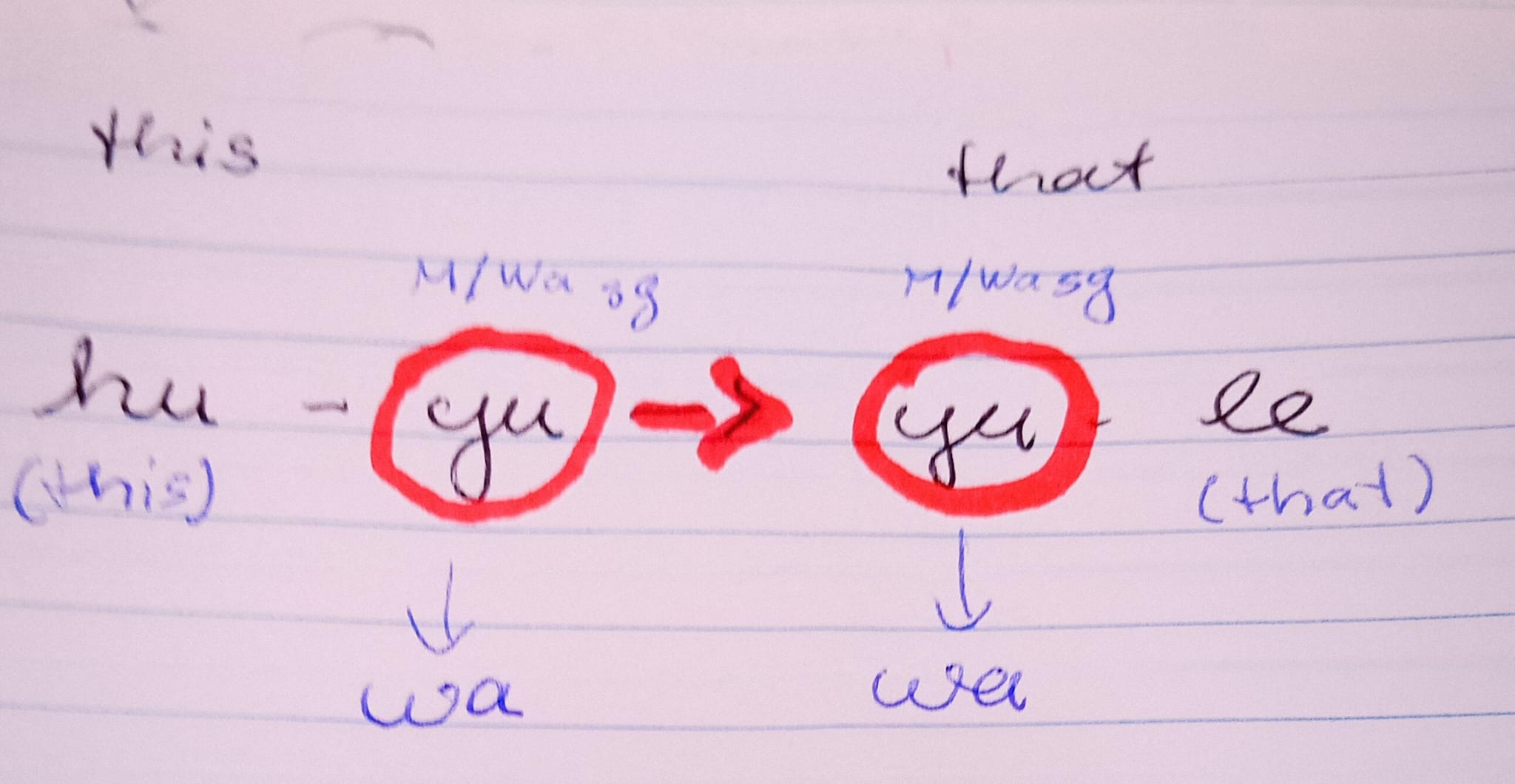
The this (hu-)/ that (-le) parts need to be added again
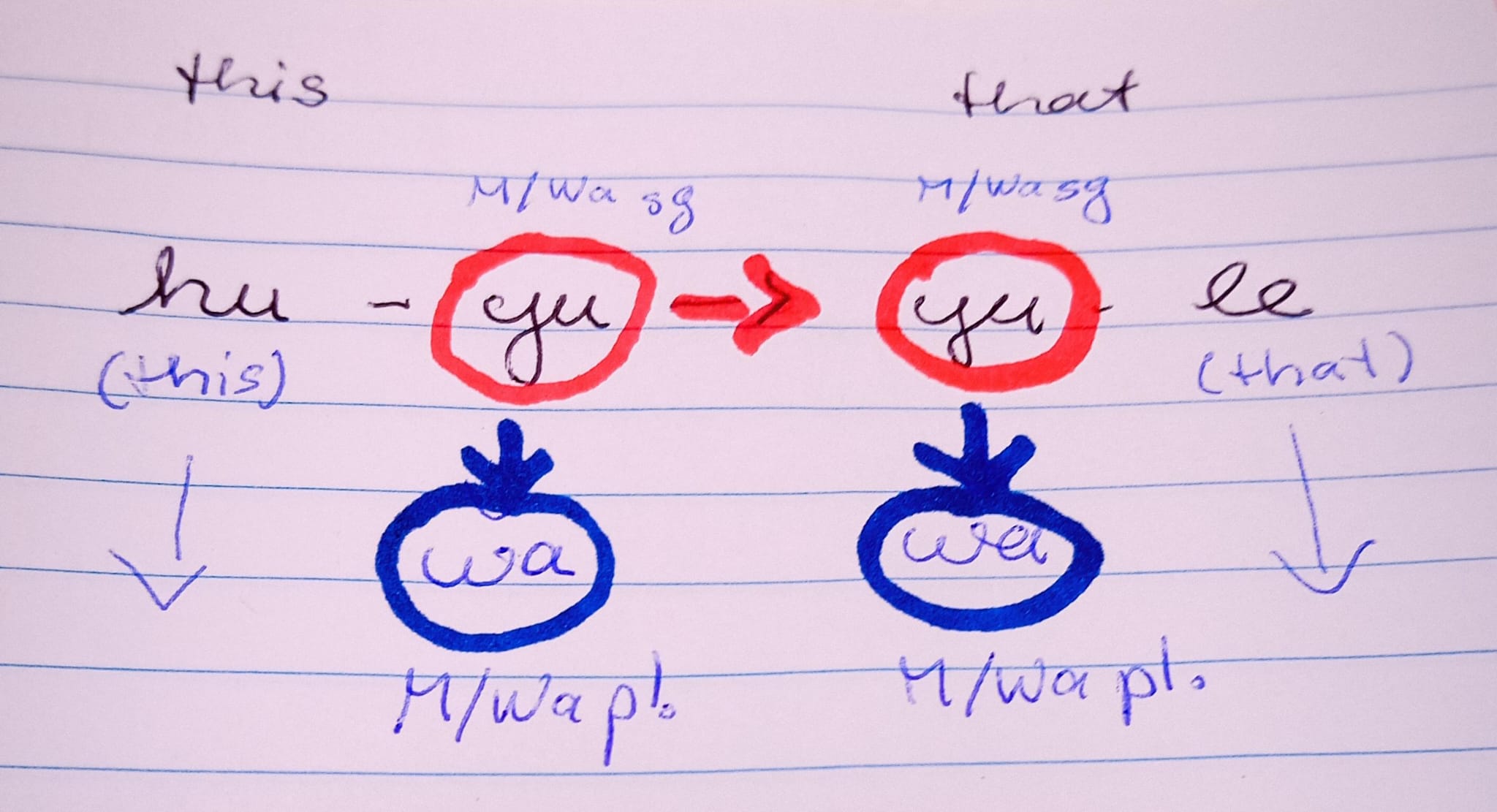
This gives us the following forms:
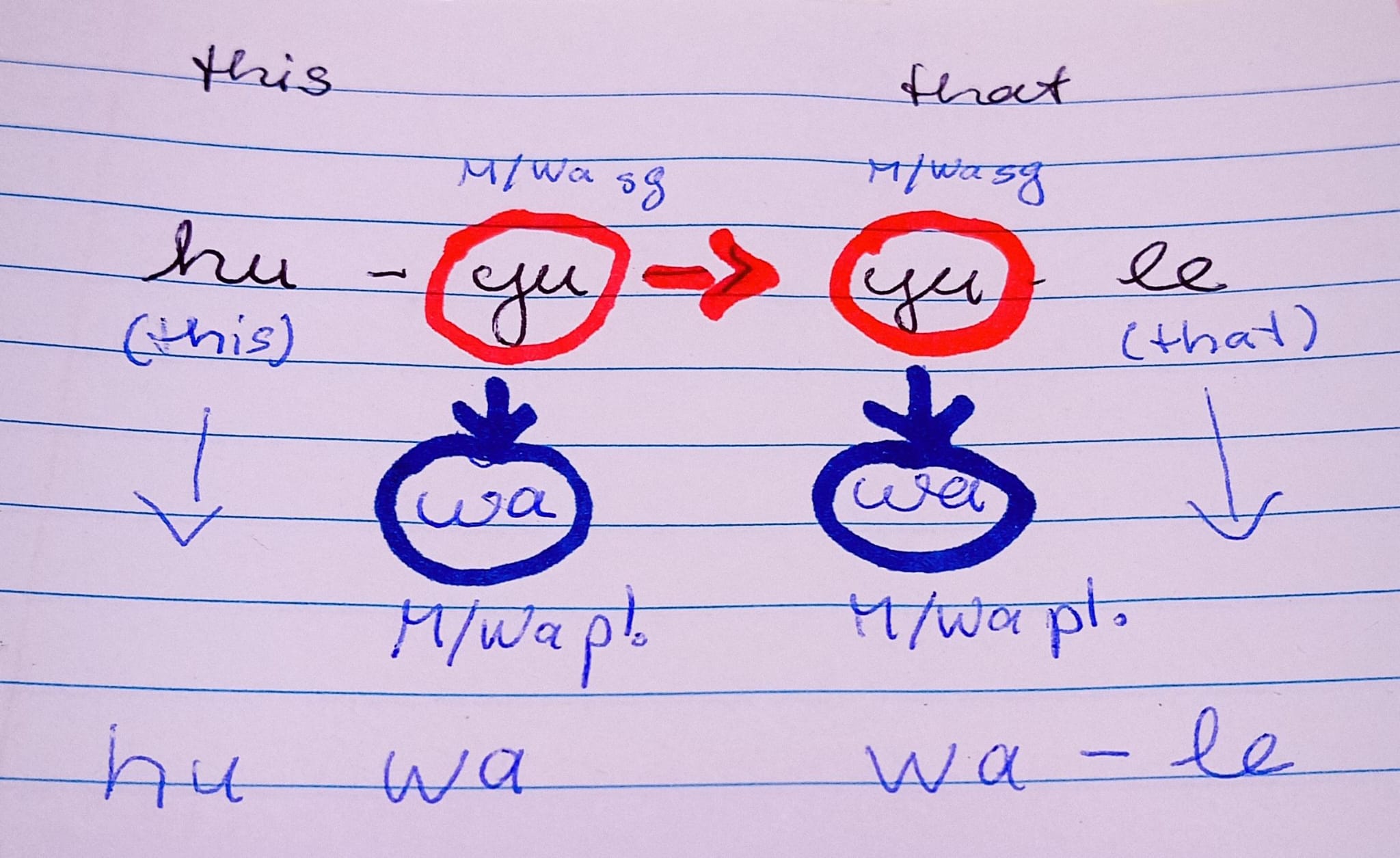
'Wale' (those) is already correct. But the first form needs a little vowel adaptation: The syllable 'hu' adapts to the vowel of the second syllable. In our case the second syllable is 'wA' now. So 'hu' changes accordingly into 'hA'.

So this is our end product:
hawa (these) - wale (those)
Now let us convert this to N/N !
Our converting rule is:

In other words: hu-yu turns into: hu-i and yu-le becomes i-le. But we need to adapt the 'hu' vowel to match the 'i' in the second syllable:

For the plural we change again the Noun class part into its plural form (i becomes zi)
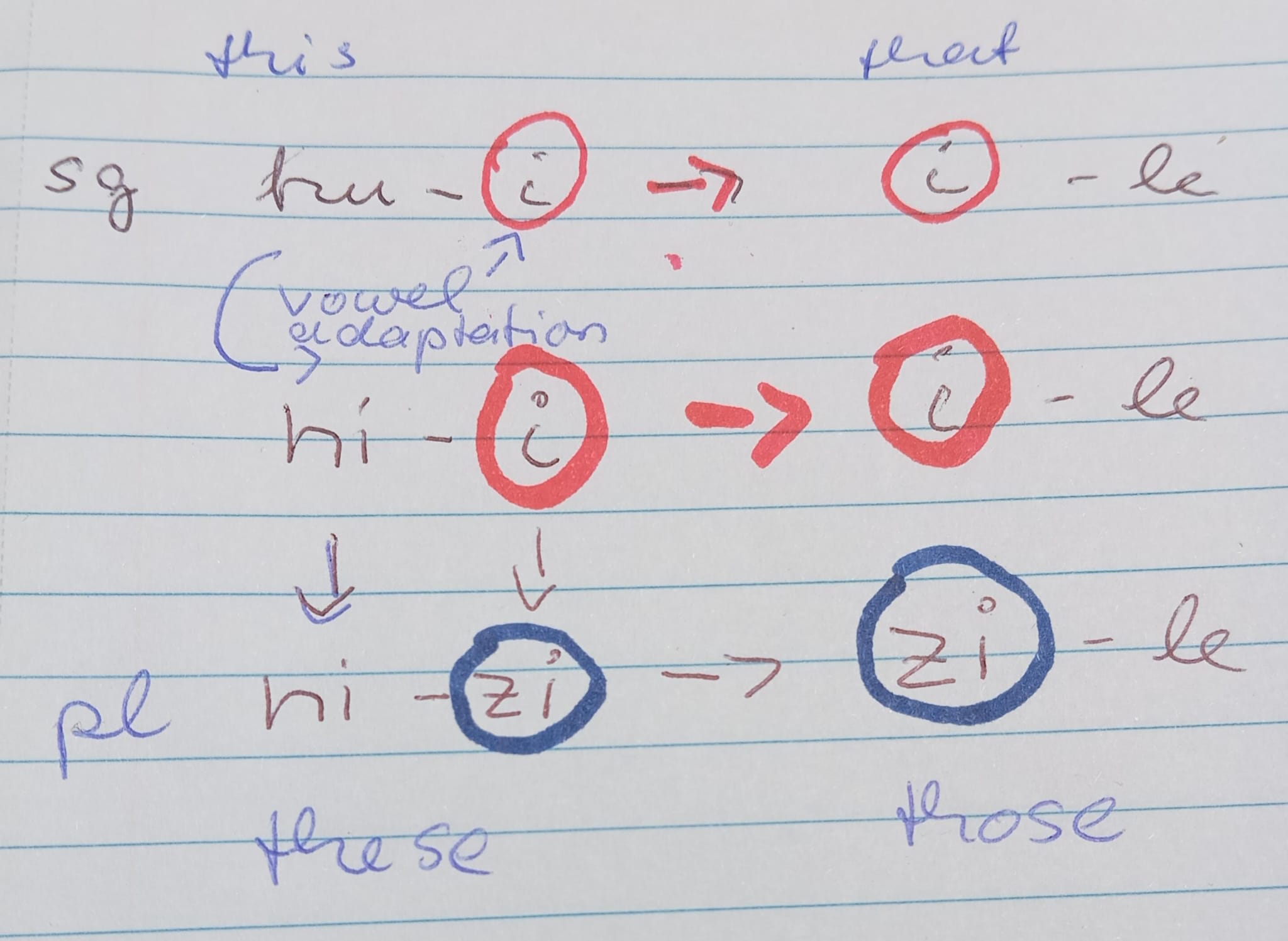
We now add as before the this (hi) / that (le) particles:
and we get 'zile' (those) which is correct and 'hizi' which has already undergone the vowel adaptation in the previous step.
So we have our end product:
hizi (these) - zile (those)
Everything clear now? Or did I manage to confuse you completely now?
You can of course simply memorize those forms. But let me warn you, you will end up with a lot of forms to memorize. (There are many more to come...) You might thus end up with a soup... and I personally like to know what's going on in my soup :D
Anyway, let's have some examples:
nguruwe huyu - this pig
ng'ombe yule - that cow
kuku wale - those chicken
mbuzi hawa - these goats
ndizi hii - this banana
nazi hizi - these coconuts
siagi ile - that butter
chupa zile - those bottles
Now before I let you go, why don't we have some more animals. Remember the animal rule?
Animals can be found in various classes. Most of them are in the N/N class. However this affects only the formation of their plural noun form. (in N/N: plural = singular) For everything else animals behave as M/Wa class nouns)
| chui | leopard |
| kondoo | sheep |
| punda | donkey |
| farasi | horse |
| paa | gazelle / deer |
| nyati | buffalo |
| punda | donkey |
| punda milia | zebra (lit. a striped donkey) |
| nyani | baboon |
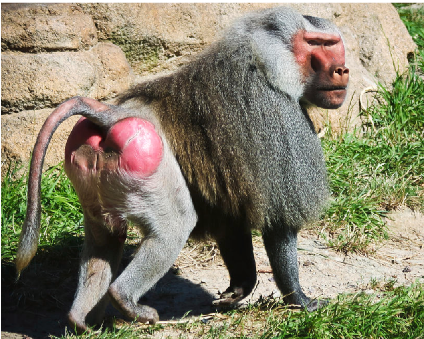
Nyani
And let's end this lesson with me presenting you a most adorable little fellow: a hyrax.
Of course you all know what a hyrax is. I for one didn't until yesterday. But now I even can tell you his Swahili name: Pimbi
And here he is:
